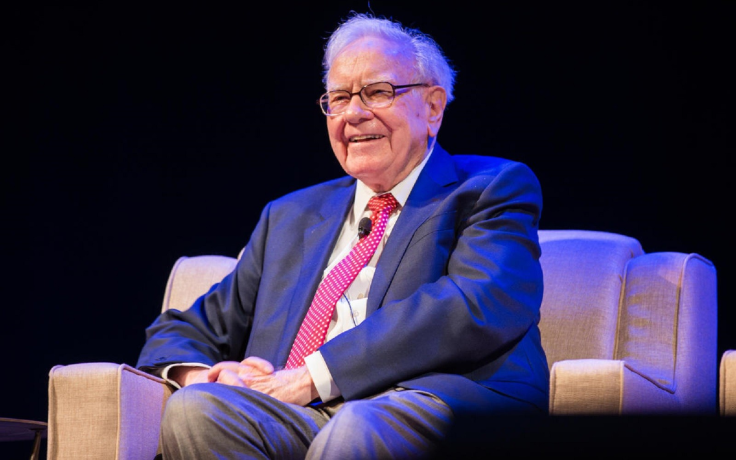Here's How The Stock Market Helps Warren Buffett Decide Which McDonalds Item He'll Have For Breakfast Everyday
Buffett's McDonald's ritual sparks focus and reinforces core values

Investor Warren Buffett is renowned for his success, and his eight-decade career has sparked curiosity about the secrets behind it. Now, did you know that the stock market influences his daily McDonald's breakfast routine? Curious how that works, and does it have something to do with his success?
Let's look into this intriguing detail.
The Daily McDonald's Ritual
Buffett makes a daily stop on his short commute from home to Berkshire Hathaway's Omaha office. "One of the good things about this five-minute drive is that on the way there's a McDonald's," he revealed in a documentary titled "Becoming Warren Buffett," according to Business Insider.
Buffett employs a unique system to decide his breakfast choice. Each morning, he instructs his wife, Astrid, on the exact amount of change to leave in his car's centre cup holder. These pre-determined sums, believed to be $2.61, $2.95, or $3.17, dictate his McDonald's order.
"I tell my wife as I shave in the morning, either $2.61, $2.95, or $3.17. She puts that amount in a little cup, and that determines which of three breakfasts I get," the billionaire said.
"When I'm not feeling quite so prosperous, I might go with the $2.61: two sausage patties I put together. $3.17 is a bacon, egg, and cheese ... but the market's down this morning, so I think I'll pass up the $3.17 and go with the $2.95."
The $2.95 option corresponds to a Sausage McMuffin with egg and cheese. Securing his McDonald's breakfast, the billionaire enjoys the meal at his desk alongside his Coke, a preference unsurprising for the largest shareholder in Coca-Cola.
This breakfast routine might seem peculiar for a man of Warren Buffett's immense wealth, estimated at around $128.9 billion. After all, the difference between his most and least expensive options is a mere 56 cents.
As Inc.com points out, calculating this frugality as a percentage of his net worth yields an astronomical number with many zeros after the decimal. However, this seemingly trivial routine might hold a deeper significance. It could be a clever behavioural strategy employed by Buffett to avoid the ostrich effect.
What Is The Ostrich Effect?
The Decision Lab defines this cognitive bias as the tendency to shy away from negative information by deliberately distancing yourself from it. Beyond his daily market analysis, Buffett's breakfast selection might function as a physical prompt.
As the site explains, the ostrich effect is our tendency to avoid negative information, even if it's important. This can backfire, making problems worse and creating unnecessary costs. Exemplifying the ostrich effect, the site describes someone who eats out frequently, likely exceeding their budget.
They know they should check their bank balance, but anxiety sets in – they suspect a negative outcome and avoid confronting it. This inaction perpetuates the unhealthy spending cycle, leaving them in the dark about their true financial situation.
A Coin Flip For Focus? Decoding Buffett's Choices
Perhaps the sausage serves as a reminder to analyse underperformance, prompting him to think, "OK, yesterday wasn't great -- what can I do differently to make today better?" Conversely, the bacon might symbolise positive reinforcement, leading him to reflect, "Yesterday was pretty good--what did I do that I should replicate today?"
The website even encourages readers to experiment with a similar practice. They suggest selecting a metric you might otherwise avoid confronting, such as revenue, cost, quality, or on-time delivery in a professional context. On a personal level, it could be your weight or whether you exercised the previous day.
This strategic breakfast ritual might have contributed to Buffett's immense success as a businessman. Recent reports indicate that the billionaire acquired over 7 million shares in Occidental Petroleum, an oil and gas exploration and production company, within two weeks.
Buffett's value investing strategy hinges on a meticulous five-step process. This approach involves scrutinising a company's return on equity for shareholders, profitability margins, debt levels, dependence on commodities, and potential undervaluation.
© Copyright IBTimes 2025. All rights reserved.






















